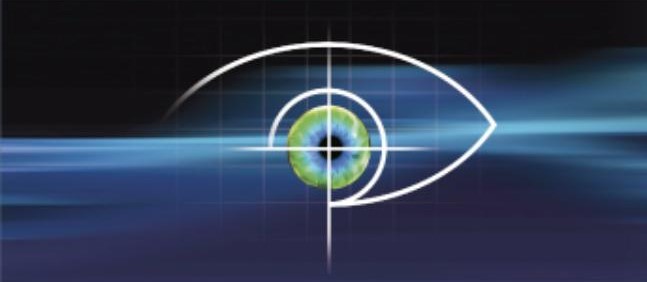Ophthalmology
Chalvatzis Nikolaos, Mataftsi Asimina
This series of lectures intends to present in a concise form the basic theoretical and practical skills in «core» ophthalmology. In other words, a selection of the most important and commonest themes a general doctor may come across are given, with discussion of aetiopathology, differential diagnosis and treatment, and a few more specialised issues are only briefly presented for acquaintance. Ophthalmology is taught in the current Medical Studies Curriculum in 3 ECTS credits, corresponding to 78 hours of studying. To achieve this, we set out a program of 26 hours (33,33%) of seminar teaching in small groups of students, and 26 hours (33,33%) of students’ preparation for this teaching, 13 hours (16,67%) of practical skills’ teaching, 8 hours (10,25%) attendance at the outpatients’ clinics and 5 hours (6,41%) preparation for the final examination. The list of theoretical and practical skills is meant to guide the student in discovering ophtahlmology in a pragmatic and effective way.
Λιγότερα
This series of lectures intends to present in a concise form the basic theoretical and practical skills in «core» ophthalmology. In other words, a selection of the most important and commonest themes a general doctor may come across are given, with discussion of aetiopathology, differential diagnosis and treatment, and a few more specialised issues are only briefly presented for acquaintance. Ophthalmology is taught in the current Medical Studies Curriculum in 3 ECTS credits, corresponding to 78 hours of studying. To achieve this, we set out a program of 26 hours (33,33%) of seminar teaching in small groups of students, and 26 hours (33,33%) of students’ preparation for this teaching, 13 hours (16,67%) of practical skills’ teaching, 8 hours (10,25%) attendance at the outpatients’ clinics and 5 hours (6,41%) preparation for the final examination. The list of theoretical and practical skills is meant to guide the student in discovering ophtahlmology in a pragmatic and effective way.
This series of lectures intends to present in a concise form the basic theoretical and practical skills in «core» ophthalmology. In other words, a selection of the most important and commonest themes a general doctor may come across are given, with discussion of aetiopathology, differential diagnosis and treatment, and a few more specialised issues are only briefly presented for acquaintance. Ophthalmology is taught in the current Medical Studies Curriculum in 3 ECTS credits, corresponding to 78 hours of studying. To achieve this, we set out a program of 26 hours (33,33%) of seminar teaching in small groups of students, and 26 hours (33,33%) of students’ preparation for this teaching, 13 hours (16,67%) of practical skills’ teaching, 8 hours (10,25%) attendance at the outpatients’ clinics and 5 hours (6,41%) preparation for the final examination. The list of theoretical and practical skills is meant to guide the student in discovering ophtahlmology in a pragmatic and effective way.
Περίγραμμα

Overall Aims /Objectives Course Goals)/Expectations (What We Will Learn to Do) /Learning Outcomes/Learning Objectives
- Clinical examination
- Patient assessment, request of laboratory tests, differential diagnosis and management
- Emergency care
- Prescription of medicines
- Simple practical skills in ophthalmology
- Efficient communication with patients and colleagues
- Knowledge of essential medico-legal issues
- Ability to appraise social and psychological factors associated with the disease
- Application of evidence-based medical knowledge.
- Efficient use of computer technology in every-day practice.
- Familiarity with medical methodology and research in Ophthalmology
- Basic knowledge of epidemiology and health care policies.
Instructors

NIKOLAOS CHALVATZIS
Ass. Professor in Ophthalmology
at 2nd Department of Ophthalmology of the Medical School in Aristotle University of Thessaloniki.
http://www.med.auth.gr/depts/bophthalmo/
T. +30 2313 323974 / e-mail: nikocha@hotmail.com
 ASIMINA MATAFTSI
ASIMINA MATAFTSI
Ass. Professor in Ophthalmology
at 2nd Department of Ophthalmology of the Medical School in Aristotle University of Thessaloniki.
http://www.med.auth.gr/depts/bophthalmo/
T. +30 2313 323974 / e-mail: mataftsi@hotmail.com
Keywords
- Ophthalmology, skills, capacities, eye, medicine
- Vision pathophysiology, visual acuity, visual capacity, visual fields, refractive errors
- Ocular motility, Strabismus, Binocular vision, Retinal correspondence, stereopsis, concomitant, incomitant strabismus
- Ocular Symptoms, Pain, visual disturbances, acute, progressive, photopsias, myopsias, metamorphopsia
- Eyelids, Orbit, Lacrymal apparatus Protection, innervation, position and movement disturbances, lids, exophthalmus, tear excretion and drainage
- Conjunctiva, Cornea, Blepharitis, conjunctivitis, causal classification, red eye differential diagnosis, pterygium, pingueculum, cornea, keratitis, scar, degenerations
- Ocular trauma, chemical, thermal burns eyeball, adnexa
- Crystalline lens, Cataract, classification, operation, Glaucoma pathophysiology, diagnosis, types, treatment
- Pupil, reflexes, iris mechanics disturbances, pharmacodynamics, shape abnormalities
- Optic disc optic nerve, optical pathways and cortex, papilledema , causes, differential diagnosis, anopsias, atrophy, cupping
- Vitreous-Retina, function, vascular disorders, artery-vein occlusion, diabetic retinopathy, degenerations, retinal detachment, tumors
- Uvea (choroid, iris, ciliary body) Uveitis, iridocyclitis, toxoplasmosis, tumors
- Eye and Systemic diseases, Retinopathy of prematurity, multiple sclerosis, connective tissue disorders, drug toxicity
Instructional Methods
- Face to face
- Distance learning
Prerequisites/Prior Knowledge
Required Courses
- IA0332 Descriptive Anatomy 3
- IA0343 Physiology II
Course Objectives/Goals
The learning outcomes of the course and Objectives of Ophthalmology described in the following four areas:
1. Knowledge:
- Basic ophthalmologic knowledge prerequisite knowledge of the anatomy and physiology of the eye, auxiliary molecules, the optic nerve and the visual pathway, pathophysiological mechanisms / risk factors.
- Basic knowledge of refractive.
- Understanding pathophysiological mechanisms, impact and knowledge of risk factors of the most common eye diseases including the following: ocular surface diseases, cataract, strabismus, uveitis, glaucoma, diabetic retinopathy, age-related macular degeneration, retinal detachment and optic nerve diseases.
- Multivariate approximation of diseases (genetic predisposition, risk factors, environment, associated systemic diseases).
- Relevance ocular diseases with adjacent anatomical structures.
2. Skills:
- Examination of the patient in primary care settings, (problem based).
- Evaluation of clinical cases, differential diagnosis, negotiation management plan to frequent ophthalmic diseases.
- Perform basic ophthalmic skills.
- Communication in medical environment.
- Application of scientific principles, methods and knowledge in ophthalmic medical practice and research. Examples of evidence-based medicine research impact in clinical ophthalmic practice.
3. Abilities:
- Ophthalmoscopy
- Εvaluation ophthalmic history
- Primary treatment of ophthalmologic cases
- Addressing red eye in primary care - problem based - virtual patient
- Urgent Ophthalmology - problem based
- Understanding the cause and distribution of frequent visual field deficits - problem based
Assessment Methods
The way to evaluate the students is the following: 1) Oral test students on 30 practical skills and 5abilities. This test is 30% of the student's final SCORING (0-3 out of 10 points). 2) Written test multiple choice answers (28) and 3 questions short development. This test is 70% of the final grade of the student (0-7 out of 10 points).
Student Assessment methods:
- Written Exam with Multiple Choice Questions
- Written Exam with Short Answer Questions
- Oral Exams
Bibliography
- Διαγνωστικές και θεραπευτικές προσεγγίσεις στην Οφθαλμολογία Σ.Α Δημητράκος, Π.Κ.Οικονομίδης, University Studio Press, 2014 ISBN 978- 960-12-2175-5
- Οφθαλμολογία ΔΕΠ Α΄ Οφθαλμολογικής Κλινικής Πανεπιστημίου Αθηνών 2012
- Οφθαλμολογία, M. Batterbury, B. Bowling (Μετάφραση Σ. Γαρταγάνης) Παρισιάνος, 2003
Additional bibliography for study
- F.G. Berson, Μετάφραση: Ι.Γ. Παλλήκαρης, Μ.Κ. Τσιλιμπάρης, Βασική Οφθαλμολογία, Πασχαλίδης, 2001
- Payne, P. Simcock, Μετάφραση: Δ.Κ. Νικολόπουλος, Π.Δ. Νάνος, Πρακτική Οφθαλμολογία, Gotsis, 2011
- Ι.Κ. Μελά, Το Μάτι για τον Γενικό Ιατρό, Συνέδρα, 2006
- Κ. Ψύλλας, Εισαγωγή στην Οφθαλμολογία και Νευροοφθαλμολογία, 2η έκδοση, University Studio Press, 2005
- D.J. Spalton, R.A. Hitchings, P.A. Hunter, Μετάφραση: Ε. Βαϊκούσης, Κλινική Οφθαλμολογια, Πασχαλίδης, 2000
- D. Pavan-Langston, Μετάφραση: Ν. Γεωργιάδης, Ν. Κοζέης, Εγχειρίδιο Διάγνωσης και Θεραπείας Παθήσεων Οφθαλμού,Σιώκης, 2006
- Ι. Κολιόπουλος, Οφθαλμολογία, Παρισιάνος, 1995
- J.J. Kanski, B. Bowling, Clinical Ophthalmology. A systematic approach, Elsevier Saunders, 2011
- J.J. Kanski, K.K. Nischal, Ophthalmology, Clinical Signs and Differential Diagnosis, Mosby, 2003
- G.K. Lang, Ophthalmology, A Pocket Textbook Atlas,Thieme, 2000
- T.l. Jackson, Moorfields Manual of Ophthalmology, Mosby, 2009
- P.K. Kaiser, N.J. Friedman, R. Pineda II, The Massachusetts Eye and Ear Infirmary Illustrated Manual of Ophthalmology, 2nd ed, Saunders, 2004
Course Syllabus
- Τutorials in small working groups (10 -12 students) (90 theoretical knowledge - skills): Introduction to Ophthalmology, elements functional anatomy and histology, physiological mechanisms institution orasis. Required diagnostic and therapeutic skills in frequent ophthalmic diseases like? Ocular surface diseases, cataract, strabismus, uveitis, glaucoma, diabetic retinopathy, age-related macular degeneration, retinal detachment and optic nerve diseases.
- Clinical Practice: (30 practical skills) in small working groups: In subjective testing methods and research methodology in ophthalmology history and ophthalmoscopy in ophthalmic nursing on testing methods, in daily ophthalmological practice in ophthalmology, methods and approaches in differential diagnosis.
- Virtual Patient - e-learning Medical School of AUTH.
- Participation in duties.
- Guided study. (research of bibliography / literature search).
- Independent study and preparation for exams.
- Clinical examination
- Patient assessment, request of laboratory tests, differential diagnosis and management
- Emergency care
- Prescription of medicines
- Simple practical skills in ophthalmology
- Efficient communication with patients and colleagues
- Knowledge of essential medico-legal issues
- Ability to appraise social and psychological factors associated with the disease
- Application of evidence-based medical knowledge.
- Efficient use of computer technology in every-day practice.
- Familiarity with medical methodology and research in Ophthalmology
- Basic knowledge of epidemiology and health care policies.

NIKOLAOS CHALVATZIS
Ass. Professor in Ophthalmology
at 2nd Department of Ophthalmology of the Medical School in Aristotle University of Thessaloniki.
http://www.med.auth.gr/depts/bophthalmo/
T. +30 2313 323974 / e-mail: nikocha@hotmail.com
 ASIMINA MATAFTSI
ASIMINA MATAFTSI
Ass. Professor in Ophthalmology
at 2nd Department of Ophthalmology of the Medical School in Aristotle University of Thessaloniki.
http://www.med.auth.gr/depts/bophthalmo/
T. +30 2313 323974 / e-mail: mataftsi@hotmail.com
- Ophthalmology, skills, capacities, eye, medicine
- Vision pathophysiology, visual acuity, visual capacity, visual fields, refractive errors
- Ocular motility, Strabismus, Binocular vision, Retinal correspondence, stereopsis, concomitant, incomitant strabismus
- Ocular Symptoms, Pain, visual disturbances, acute, progressive, photopsias, myopsias, metamorphopsia
- Eyelids, Orbit, Lacrymal apparatus Protection, innervation, position and movement disturbances, lids, exophthalmus, tear excretion and drainage
- Conjunctiva, Cornea, Blepharitis, conjunctivitis, causal classification, red eye differential diagnosis, pterygium, pingueculum, cornea, keratitis, scar, degenerations
- Ocular trauma, chemical, thermal burns eyeball, adnexa
- Crystalline lens, Cataract, classification, operation, Glaucoma pathophysiology, diagnosis, types, treatment
- Pupil, reflexes, iris mechanics disturbances, pharmacodynamics, shape abnormalities
- Optic disc optic nerve, optical pathways and cortex, papilledema , causes, differential diagnosis, anopsias, atrophy, cupping
- Vitreous-Retina, function, vascular disorders, artery-vein occlusion, diabetic retinopathy, degenerations, retinal detachment, tumors
- Uvea (choroid, iris, ciliary body) Uveitis, iridocyclitis, toxoplasmosis, tumors
- Eye and Systemic diseases, Retinopathy of prematurity, multiple sclerosis, connective tissue disorders, drug toxicity
- Face to face
- Distance learning
- IA0332 Descriptive Anatomy 3
- IA0343 Physiology II
The learning outcomes of the course and Objectives of Ophthalmology described in the following four areas:
1. Knowledge:
- Basic ophthalmologic knowledge prerequisite knowledge of the anatomy and physiology of the eye, auxiliary molecules, the optic nerve and the visual pathway, pathophysiological mechanisms / risk factors.
- Basic knowledge of refractive.
- Understanding pathophysiological mechanisms, impact and knowledge of risk factors of the most common eye diseases including the following: ocular surface diseases, cataract, strabismus, uveitis, glaucoma, diabetic retinopathy, age-related macular degeneration, retinal detachment and optic nerve diseases.
- Multivariate approximation of diseases (genetic predisposition, risk factors, environment, associated systemic diseases).
- Relevance ocular diseases with adjacent anatomical structures.
2. Skills:
- Examination of the patient in primary care settings, (problem based).
- Evaluation of clinical cases, differential diagnosis, negotiation management plan to frequent ophthalmic diseases.
- Perform basic ophthalmic skills.
- Communication in medical environment.
- Application of scientific principles, methods and knowledge in ophthalmic medical practice and research. Examples of evidence-based medicine research impact in clinical ophthalmic practice.
3. Abilities:
- Ophthalmoscopy
- Εvaluation ophthalmic history
- Primary treatment of ophthalmologic cases
- Addressing red eye in primary care - problem based - virtual patient
- Urgent Ophthalmology - problem based
- Understanding the cause and distribution of frequent visual field deficits - problem based
The way to evaluate the students is the following: 1) Oral test students on 30 practical skills and 5abilities. This test is 30% of the student's final SCORING (0-3 out of 10 points). 2) Written test multiple choice answers (28) and 3 questions short development. This test is 70% of the final grade of the student (0-7 out of 10 points).
- Written Exam with Multiple Choice Questions
- Written Exam with Short Answer Questions
- Oral Exams
- Διαγνωστικές και θεραπευτικές προσεγγίσεις στην Οφθαλμολογία Σ.Α Δημητράκος, Π.Κ.Οικονομίδης, University Studio Press, 2014 ISBN 978- 960-12-2175-5
- Οφθαλμολογία ΔΕΠ Α΄ Οφθαλμολογικής Κλινικής Πανεπιστημίου Αθηνών 2012
- Οφθαλμολογία, M. Batterbury, B. Bowling (Μετάφραση Σ. Γαρταγάνης) Παρισιάνος, 2003
- F.G. Berson, Μετάφραση: Ι.Γ. Παλλήκαρης, Μ.Κ. Τσιλιμπάρης, Βασική Οφθαλμολογία, Πασχαλίδης, 2001
- Payne, P. Simcock, Μετάφραση: Δ.Κ. Νικολόπουλος, Π.Δ. Νάνος, Πρακτική Οφθαλμολογία, Gotsis, 2011
- Ι.Κ. Μελά, Το Μάτι για τον Γενικό Ιατρό, Συνέδρα, 2006
- Κ. Ψύλλας, Εισαγωγή στην Οφθαλμολογία και Νευροοφθαλμολογία, 2η έκδοση, University Studio Press, 2005
- D.J. Spalton, R.A. Hitchings, P.A. Hunter, Μετάφραση: Ε. Βαϊκούσης, Κλινική Οφθαλμολογια, Πασχαλίδης, 2000
- D. Pavan-Langston, Μετάφραση: Ν. Γεωργιάδης, Ν. Κοζέης, Εγχειρίδιο Διάγνωσης και Θεραπείας Παθήσεων Οφθαλμού,Σιώκης, 2006
- Ι. Κολιόπουλος, Οφθαλμολογία, Παρισιάνος, 1995
- J.J. Kanski, B. Bowling, Clinical Ophthalmology. A systematic approach, Elsevier Saunders, 2011
- J.J. Kanski, K.K. Nischal, Ophthalmology, Clinical Signs and Differential Diagnosis, Mosby, 2003
- G.K. Lang, Ophthalmology, A Pocket Textbook Atlas,Thieme, 2000
- T.l. Jackson, Moorfields Manual of Ophthalmology, Mosby, 2009
- P.K. Kaiser, N.J. Friedman, R. Pineda II, The Massachusetts Eye and Ear Infirmary Illustrated Manual of Ophthalmology, 2nd ed, Saunders, 2004
- Τutorials in small working groups (10 -12 students) (90 theoretical knowledge - skills): Introduction to Ophthalmology, elements functional anatomy and histology, physiological mechanisms institution orasis. Required diagnostic and therapeutic skills in frequent ophthalmic diseases like? Ocular surface diseases, cataract, strabismus, uveitis, glaucoma, diabetic retinopathy, age-related macular degeneration, retinal detachment and optic nerve diseases.
- Clinical Practice: (30 practical skills) in small working groups: In subjective testing methods and research methodology in ophthalmology history and ophthalmoscopy in ophthalmic nursing on testing methods, in daily ophthalmological practice in ophthalmology, methods and approaches in differential diagnosis.
- Virtual Patient - e-learning Medical School of AUTH.
- Participation in duties.
- Guided study. (research of bibliography / literature search).
- Independent study and preparation for exams.
Tutorial Leaflet
Pathophysiology of vision, Motility, Strabismus, Binocular vision
Ophthalmic Symptoms, Pain, Visual Distrurbances
Eyelids, Orbit, Lacrimal duct
Conjunctivitis, Conjunctival tumors, Criteria for D/D
Cornea, Ophthalmic traumatology, Crystalline lens
Pupil, Iris
Glaucoma
Optic disk, Optic nerve, Visual pathway
Vitreous, Retina
Uvea, Systematic diseases and the eye
Additional Documents
Ανοικτό Ακαδ. Μάθημα

Αρ. Επισκέψεων : 7129
Αρ. Προβολών : 38212

